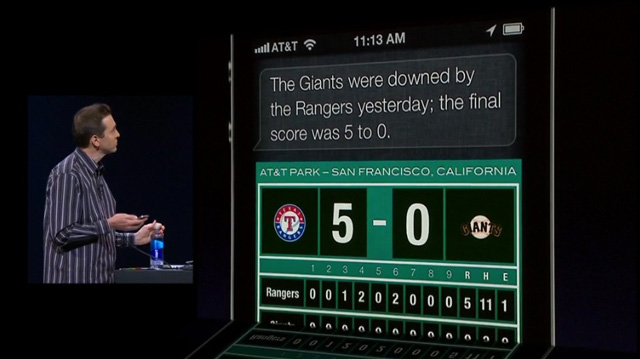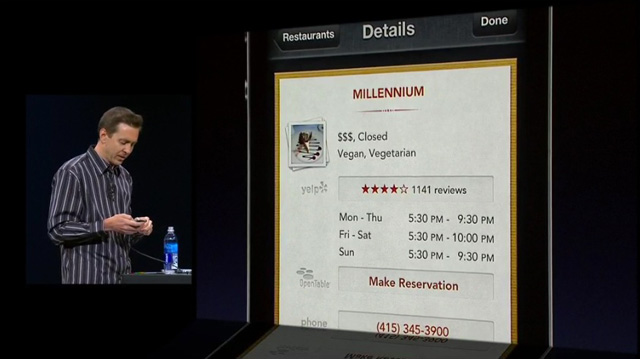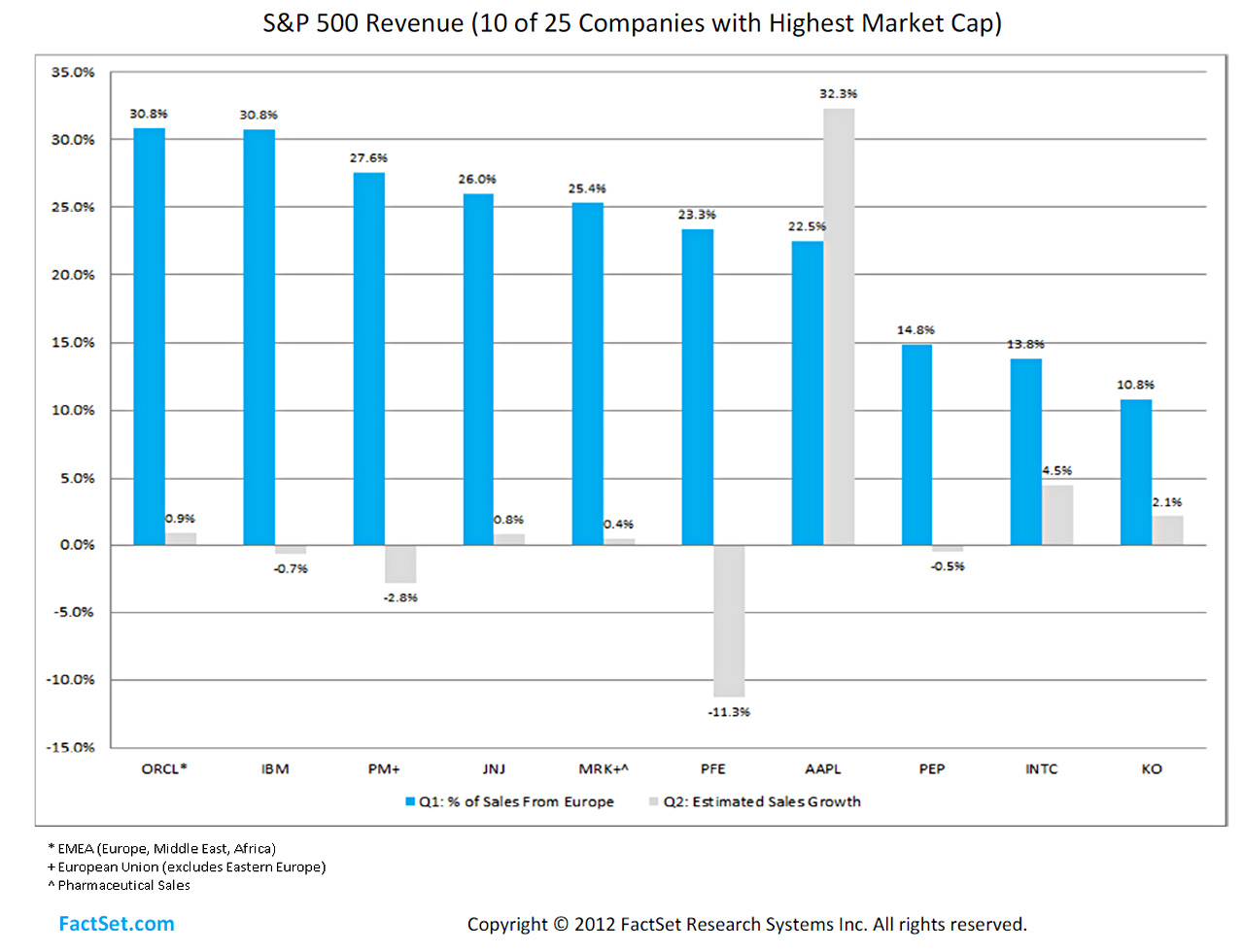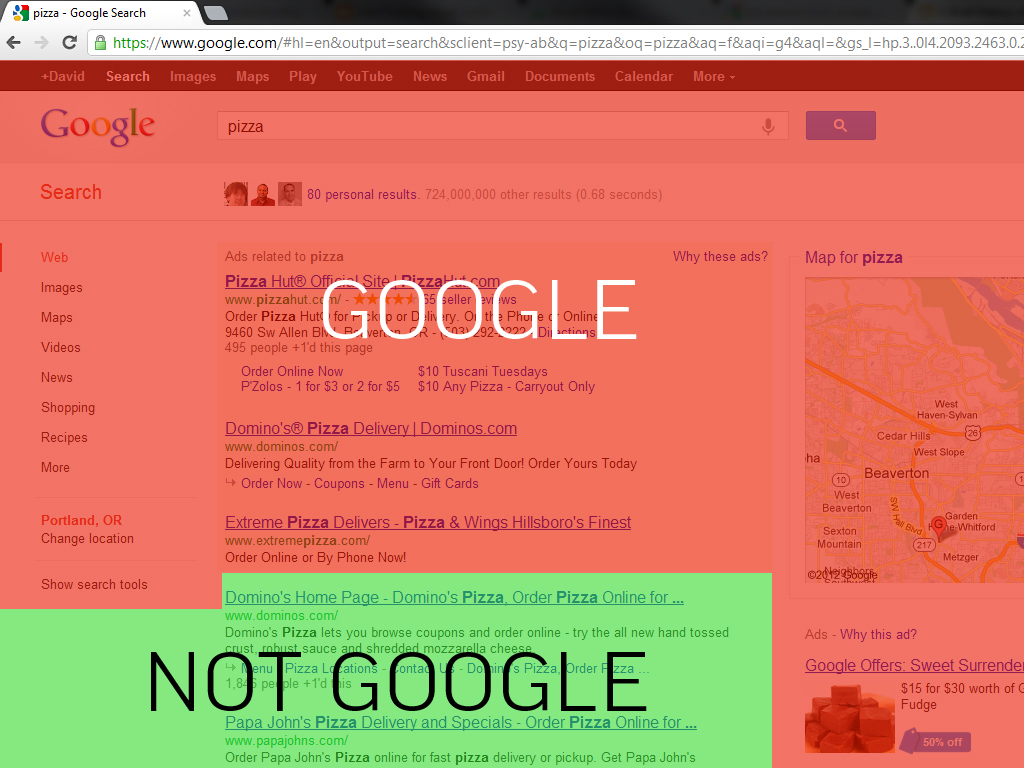I do not like them, Sam I am.
Horace Dediu puts the spotlight on the crazy way Steve Ballmer speaks. One of the first signs of bullshit is when someone can’t talk in plain English.
He reminds me of this chick.
Horace Dediu puts the spotlight on the crazy way Steve Ballmer speaks. One of the first signs of bullshit is when someone can’t talk in plain English.
He reminds me of this chick.
From The Wall Street Journal (via parislemon):
Best Buy Co. is testing a new turnaround strategy: making its cavernous electronics emporiums look more like Apple Inc.’s sleek retail outlets.
The heart of a test store near Best Buy’s headquarters here is a Solution Central help desk, rimmed with chairs and manned by the company’s black-tied Geek Squad. It strongly resembles the Genius Bar at Apple’s stores.
Reminds me of those kits that turn a Pontiac Fiero into a Lamborghini.
Electronista: Apple drops iOS interface patent to speed Samsung trial
There are some new developments in the Apple versus Samsung “data tapping” patent battle. In a surprise move, Northern District of California Federal Appeals Court Judge Lucy Koh granted a preliminary sales injunction against Samsung’s Galaxy Tab 10.1 tablet late today. Additionally, Apple has dropped an iPhone user interface design patent claim to help expedite the patent trial, which is scheduled for July 30.
And:
Apple has also filed paperwork dismissing a claim concerning elements of the iPhone GUI. The filing is without prejudice, so Apple can continue to press the claim in the future in a different suit. Judge Koh has applied limits on the trial in regards to arguments and pieces of evidence, so this winnowing focuses the trial on fewer intellectual property rights.
When I read this article last week I was a little optimistic. Have we hit a tipping point with patents? Are we going to see more companies opting to drop patents in order to pursue the enforcement of others?
I can dream, can’t I?
I could quote Michael Lopp’s whole post, go and read the whole thing at his site:
If your goal is this solo win, if you have achieved everything that you want to achieve with this hit, here’s to you – the first round is on me. If you goal is growth, if you want to turn this win into more success, taking the time to catch your breath is the wrong strategy. Like, really wrong.
Your success is a battle plan for your competition. Your success is a public acknowledgement of a strategy that works, and while I appreciate that you and your team are tired, I’m going to be a buzz kill. Your success is your worst enemy. Your success, while hard earned, is a curse.
Reminds me of how some people say, “Man, if I accomplished [fill in accomplishment], I’d retire and relax.” What people who say that don’t understand is many (most?) of the successful people in the world continue to work long after they’ve ‘made it’. Larry Ellison, Rupert Murdoch, Warren Buffett, Steve Jobs, Richard Branson – all these cats could have retired years ago and ‘coasted’, but the kind of mind that builds an empire doesn’t understand the word ‘coast’.
Louis C.K. taking the power back by selling tickets for his new tour on his website:
All tickets will be $45, with C.K. reserving the right to cancel a ticket in exchange for a refund if the ticketholder attempts to sell the ticket for “anything above the original price.”
“Making my shows affordable has always been my goal but two things have always worked against that. High ticket charges and ticket re-sellers marking up the prices,” explained C.K. in the email. “Some ticketing services charge more than 40% over the ticket price and, ironically, the lower I’ve made my ticket prices, the more scalpers have bought them up, so the more fans have paid for a lot of my tickets.
As if there weren’t enough reasons to like this guy. Well done.
The ever-insightful Horace Dediu on Apple’s retail stores:
Which brings up an obvious question: Why did Apple triple employment at each store? One could answer that many of the newer stores are bigger, so-called flagship stores. But the vast majority of stores are in mall locations which are of limited size. Flagship stores alone cannot account for the increase. One could also suggest that perhaps the stores are open longer and there is a need for more shifts. Again, the vast majority of stores are constrained by the opening hours of malls which, as far as I know, have been steady. Anecdotally, it’s also evident that there are more employees in a store at a given time. There are many more of those colored T-shirts at first glance.
One hint is in the design changes in the stores. Apple has removed shelving, registers and almost all non-Apple merchandise. It has replaced the visible stock with tables on which rest products that can be used. If there weren’t any people in the store, the store would look almost completely empty, just an open space.
But that’s the whole point. The stores are designed to be filled with people. The stores have an open layout because it allows more people to be inside the store at the same time. And the more people the more employees.
Guy English on the when and why of Microsoft’s Surface announcement:
There’s many pieces arguing that Microsoft hurt themselves by not specifying things like screen size (in pixels and DPI), battery life, and price point.
They’re all missing the point of the announcement.
Microsoft introduced the Surface this week, hastily, in order to dodge anything Apple may have announced and to frame the discussion of whatever Google is going to announce at I/O next week.
Google is expected to announce a tablet next week at Google I/O. In the mainstream press whatever they announce is now going to be mentioned along side the Microsoft Surface.
That Microsoft didn’t release specifics about battery life, screen size or price point insn’t a mistake — it’s the entire point.
Since Microsoft doesn’t currently have a tablet on the market, they’re also able to avoid The Osborne Effect—sure, they’re preannouncing a new product, but at least it’s not affecting sales of any current products.
There’s been a lot of discussion on how Apple is getting aggressive at getting Google off of iOS, ever since the Steve Jobs “thermonuclear” comment.
Many have been focusing on this snubbing of Google in an almost soap opera kind of way. John Gruber got a keen “fuck you, Google” feeling about the whole keynote and I agree there’s absolutely some strong, healthy rivalry going on. No doubt.
But after watching Scott Forstall walk through the new features of Siri, I realized it really doesn’t require a lot of justification on why they’re not using Google, it just makes good business sense.
Have a look at these screen grabs from the keynote:



You catch some of the logos in those images?
Yelp. OpenTable. Rotten Tomatoes (we also know they’re getting a good chunk of horsepower from Wolfram Alpha).
Apple hasn’t snubbed Google like a teenage girl, they’re merely cut out the middle man.
In much the same way as Apple rethought what a smartphone is with the iPhone, they’re now rethinking search.
A smartphone no longer means having a dedicated (hardware) keyboard on your device and search no longer means having a dedicated search box on your screen.
I can envision a time in the not-too-distant future where many people start replacing the term, “Just Google it.” with “Just ask Siri.” You watch.
Someone isn’t feeling the effects of the European Crisis.


via David Mihm
Over at GigaOM, Stacey Higginbotham tells the tale of the Dawson family’s failed Kickstarter project.
First off, as she accurately notes, over half of the projects on Kickstarter fail. Shouldn’t be surprising. There’s a lot of bad ideas out there in the world, and Kickstarter is part of that world. Reminds me of the statistic about how most new businesses fail within the first year.
The good news is the Jane Dawson, the mother, figured out like a big, grown up girl one of the main reasons her project failed – she was trying to sell something people could get for free. Jane says (ha!):
Not to get too nerdy about it, but it’s a classic public good / free rider problem – everybody benefits just the same whether they personally pay for it or not, as long as someone does and it still happens. … This is in stark contrast to some of Kickstarter’s huge success stories, which offered the actual paid product at a discount if you pledged over a certain amount – Kickstarter became simply a channel for pre-orders, and with a popular product that gets you a lot of funding.
So, you knew the business model of the hugely successful projects on Kickstarter but you decided to make one where one option was people getting it for free. Awesome. Your project should work out great.
Then Mrs. Dawson whines about asking people for money:
What made it hard was that putting yourself out there in this way and repeatedly begging people for money is emotionally draining. We sent countless numbers of emails to friends and family, posted repeated updates on Facebook and Twitter (as you saw) etc. Even though we knew lots of people wanted to pledge, they never quite seemed to get around to it, so that sort of reminding was key. (It’s also made me view our local NPR station’s pledge drives with a little more sympathy!)
Getting people to open their wallets is hard because for two reasons. Either:
A) Your idea sucks, so people don’t want to pay for your shitty product
B) You suck at presenting and marketing your idea and thus people are unable to see your brilliance
I might not have been as much of a dick in this post if I hadn’t successfully funded my own Kickstarter earlier this year. With a goal of $4,000, mine was peanuts compared to million dollar plus projects, but it was still hard work. I send out over a hundred emails to people in the design and technology world I thought would geniunely appreciate my project.
I labored over and over the email I sent to prospective backers and/or evangelizers because I didn’t want to come across as a beggar on the street. So what you do is act like a human being – don’t bring up money at all. It helps when you have a great product, because when people see a great product they shove you aside and throw their money down. Authenticity opens the door. A great product gets you into thier wallets.
I love how the Dawsons re-launched their Kickstarter with a revised target of $3,000 – a far cry from the original $30,000 they were aiming for. She says the family “found ways to cut their production costs”. That’s a huge drop in production costs. Did they decide to kill some camera and editing people? When you drop your goal that significantly I say be careful. If there’s anything I learned from my Kickstarter is all the invisible costs of producing and shipping a product. I walked a way with a meager profit, but after swallowing some costs for shipping and printing ‘bumps’. When you produce your own product on Kickstarter, you don’t have the luxury of supply chain discounts companies like Apple enjoy.
I should note while I’ve talked a lot of smack about Facebook and the shallow excuse for ‘friends’ and ‘relationships’ it brings into peoples’ lives, It accounted for 12.57% of my funding. I’m lucky to have encouraging, generous family and friends. In some cases family and friends didn’t even back the project but simply shared the link to people they thought would appreciate it and in sometimes that’s even better.
Tina Roth Eisenberg believes everyone should have side projects. So do I.
Jason Giddings came up with an idea for a multitouch, glass keyboard and mouse and launched a Kickstarter project late in 2011 to get it funded. I remember coming across it when I was launching my Kickstarter. He was aiming for $50K in funding but ended up getting over $143K. Amazing.
My thoughts now are the same as my thoughts then – while the project is gorgeous, it’s a step backwards in usability. A desktop keyboard with no haptic feedback (translation: you don’t know where the keys are unless you look at the screen)?
If I have any smack to talk about my iPhone and iPad, it’s that it’s a pain in the ass typing on a glass keyboard, because, well, there’s no haptic feedback.
I don’t intentionally seek out projects to trash, but Mr. Giddings has taken the main interface to computers and made it less usable.
In addition to function following form on this Kickstarter, Mr. Giddings’ project also shows how hard it can be to turn a 3-D rendering into a real product. Have a looks as his project updates to see what I mean. In short, things have gotten complicated.
It’s exciting to fund projects on Kickstarter, but be wary when you do. My Kickstarter was a screen-printed poster series and I thought that was more than enough to handle. I can’t imagine what goes into product design, with machining, protyping and software/hardware integration.
I love headlines like these.
Makes me laugh.